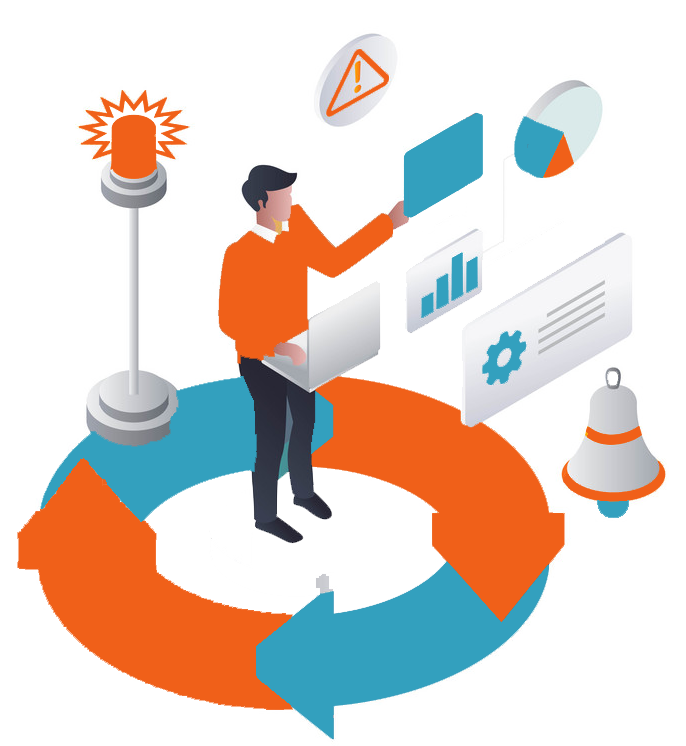
Supply chain management & resilience: risk & reward.
Introduction
Supply Chain Management (SCM) and Supply Chain Resilience are two related but distinct concepts that are critical to the success of any business. While both are important, they have different objectives and require different strategies and approaches. In this article, we will explore the difference between these two concepts and how they can be used to improve the overall performance of your supply chain.
Supply Chain Management
Supply Chain Management (SCM) refers to the coordination and management of activities involved in the movement of goods from suppliers to customers. It encompasses the planning, design, execution, control, and monitoring of supply chain activities with the goal of creating value and achieving sustainable competitive advantage. SCM is a holistic approach that focuses on improving the efficiency and effectiveness of a supply chain. This includes activities such as sourcing, production, logistics, and distribution. By improving the efficiency of these activities, businesses can reduce costs, increase efficiency, and improve customer satisfaction.
of creating value and achieving sustainable competitive advantage. SCM is a holistic approach that focuses on improving the efficiency and effectiveness of a supply chain. This includes activities such as sourcing, production, logistics, and distribution. By improving the efficiency of these activities, businesses can reduce costs, increase efficiency, and improve customer satisfaction.
Supply Chain Resilience
on the other hand, Supply Chain Resilience (SCR) refers to the ability of a supply chain to anticipate, withstand, recover, and adapt to disruptions and unexpected events. It is the ability of a supply chain to maintain or quickly restore its normal operations in the face of unexpected events such as natural disasters, pandemics, cyber-attacks, and other types of disruptions.Supply Chain Resilience is a proactive approach that focuses on minimizing the impact of disruptions on a supply chain. This includes activities such as risk assessment, incident response, and recovery planning. By improving the resilience of a supply chain, businesses can reduce the impact of disruptions, minimize downtime, and maintain the continuity of operations.
disruptions and unexpected events. It is the ability of a supply chain to maintain or quickly restore its normal operations in the face of unexpected events such as natural disasters, pandemics, cyber-attacks, and other types of disruptions.Supply Chain Resilience is a proactive approach that focuses on minimizing the impact of disruptions on a supply chain. This includes activities such as risk assessment, incident response, and recovery planning. By improving the resilience of a supply chain, businesses can reduce the impact of disruptions, minimize downtime, and maintain the continuity of operations.
Difference between SCM and SCR
One key difference between SCM and Supply Chain Resilience is their focus. While SCM is focused on improving efficiency and effectiveness, Supply Chain Resilience is focused on minimizing the impact of  disruptions. This difference is reflected in the types of activities that are prioritized. SCM activities such as sourcing and production are focused on improving efficiency and reducing costs, while Supply Chain Resilience activities such as risk assessment and incident response are focused on minimizing the impact of disruptions.
Another difference is the time frame.
disruptions. This difference is reflected in the types of activities that are prioritized. SCM activities such as sourcing and production are focused on improving efficiency and reducing costs, while Supply Chain Resilience activities such as risk assessment and incident response are focused on minimizing the impact of disruptions.
Another difference is the time frame.
SCM is a long-term strategy that focuses on improving the efficiency and effectiveness of a supply chain over time. On the other hand, Supply Chain Resilience is a short-term strategy that focuses on minimizing the impact of disruptions in the immediate aftermath of an incident. Despite these differences, SCM and Supply Chain Resilience are not mutually exclusive.In fact, they are closely related and complementary. Improved supply chain visibility, for example, can help improve SCM by providing real-time information on inventory levels, production schedules, and logistics.This, in turn, can help improve Supply Chain Resilience by providing early warning of potential disruptions, allowing businesses to take proactive measures to mitigate their impact.
Conclusion
In conclusion, Supply Chain Management and Supply Chain Resilience are two related but distinct concepts that are critical to the success of any business. While SCM is focused on improving efficiency and effectiveness, Supply Chain Resilience is focused on minimizing the impact of disruptions. Both concepts are important, and businesses should strive to implement strategies and approaches that improve both. By improving the efficiency of their supply chain operations and reducing the impact of disruptions, businesses can reduce costs, improve customer satisfaction, and maintain the continuity of operations.
Are youprepared to handle critical events? Signup for free
If you intersted to follow our blogs : Subscribe
